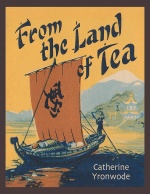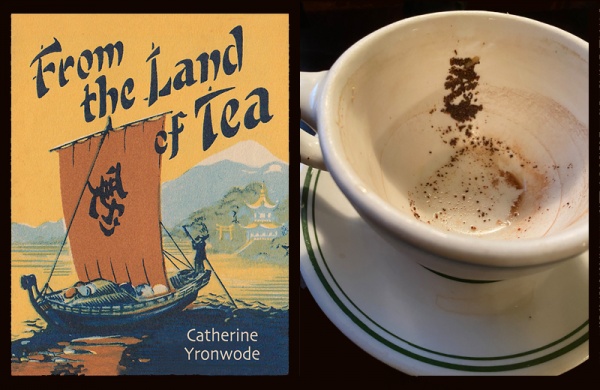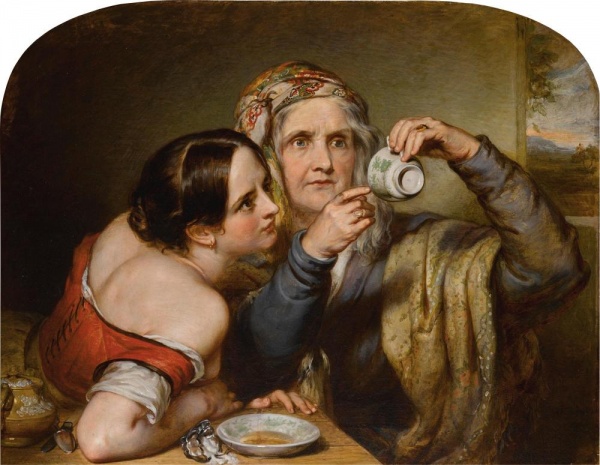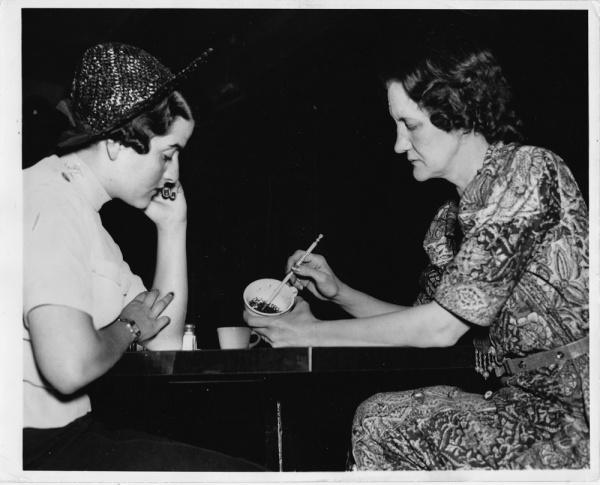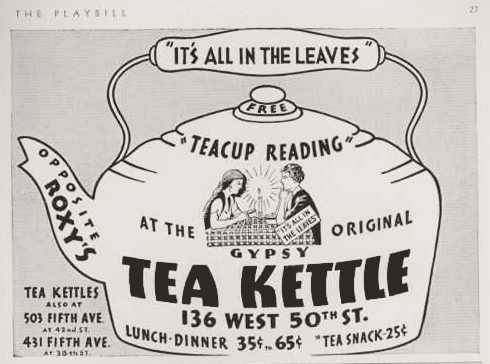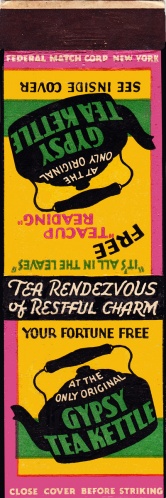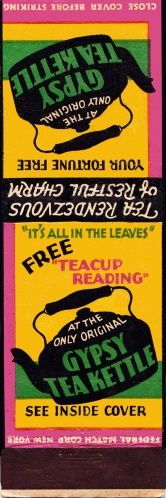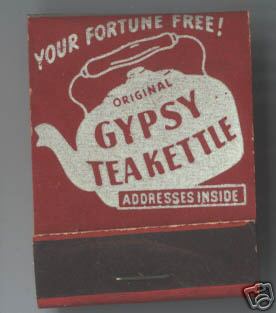Viewing the Cup
From Mystic Tea Room
In this installment of "From the Land of Tea," we take a look at a web page that was funded by my Patreon supporters, who had access to it one full year before the public.
- Patreon Release Date: August 14th, 2021
- Public Release Date: August 14th, 2022.
Please consider subscribing to my Patreon stream for as little as $2.00 per week:
Patrons: To discuss this and other Patreon pprojects with me, please join my private Patreon Forum:
Support From the Land of Tea
All of the material you have access to here -- the fabulous tea cups, the instructive booklets, the nostalgic postcards, the boldly graphic matchbook covers, and all of the historical information researched and shared from the mind of the woman who is making it all happen -- can easily fit into one 8 x 10 foot room in an old Victorian farmhouse, but you would never see it without the investment of the time it takes to produce such a site and the caloric input such a site requires in the form of food for the writer, graphic designer, and database manager, as well as the US currency needed to pay for the computers, software applications, scanners, electricity, and internet connectivity that bring it out of that little room and into the world. So, as you can see, this site is the darling of many, and it is growing at a rapid rate ... but although it is "free," there also is a cost. Your financial support underwrites this cost.
Each new web page or sample pdf is circulated to Patrons as an unpublished galley proof or advance copy. After one year access for Patrons, each web page will be released to the public, while book pages will be available to the public as printed books, and copies will be sent to Patrons who subscribe at the upper two tiers.
Patrons have access to a Private Patreon sub-forum within the Lucky Mojo Forum, and will be accorded special Red Star Avatar badges at the Forum.
Viewing the Cup
Although it seems a simple thing to look into the tea cup and see images in the leaves, there are at least three ways to do so. The results may be the same, but the manner of presentation is different. All are traditional and none is "better" than another.
Let us begin with the usual drinking off of the tea, the swirling or swinging of the cup, the inversion and rotation of the cup in the saucer, and the tapping of the bottom. Not every reader does all of these things, but most readers understand the method and follow its general principles. For more complete details, see "The Stranger in the Cup" by Gregory White and Catherine Yronwode.
Next comes the handling of the cup as you look within for the images:
- If you are reading for yourself, hold the cup in your dominant hand and tip it slightly toward you, as if about to take a drink, then consider what images appear.
- If you are reading for a sitter, start by holding the cup the way the sitter did (right handed or left handed) and tipping it toward you as he or she did when taking the last sip from the cup. If you see nothing, rotate the cup slightly, a few degrees at a time, until an image comes into view. Remember, even "non-images" like a row of dots do have a meaning.
- If you want to memorialize a reading, all you have to do is photograph it at the angle which best displays the images that you see. If you are an artist, you might prefer to draw it. Date your reading so you can refer to it again and annotate the image if it "comes true."
- Do not set the cup down until you finish your reading, for if you do, the residual liquid in the cup may cause the images to slide, change, and become disfigured.
All right, having understood what your hands will do during the reading, now we can look at the three major variations in how the reading is performed.
Gazing With Your Eyes Only
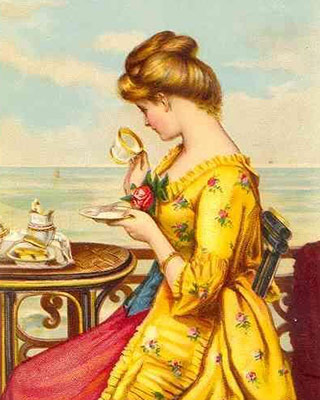
When reading a teacup for yourself it is the simplest and most natural thing in the world to simply look into the cup and see pictures among the leaves.
You do not need to touch the leaves or explain to yourself or anyone else what they look like, because your eyes convey the information directly to your brain.
This method, which i call "Gazing" is meditative and quiet. It is by you, for you aalong..
In a way, gazing is so trivial that it seems odd to mention it as a "method." However, when we move on to the next methods, you will understand that it is, in fact, one of several ways to view a cup.
Sharing the Gaze With a Family Member, Friend, or Client
If you are reading for a sitter who is emotionally close to you, such as a family member, or if you are showing your own cup to a friend who will in turn be showing hers to you, it is common practice to hold the cup up, sit very close to one another, or have your friend look over your shoulder and ask them if they see the image.
Asking for the gaze of another person can take the form of a game -- "Do you see the squirrel?" or "I see a squirrel -- what do YOU see?" However, if you pose a question in these ways, you must be prepared for your friend or family member to disagree with you -- to see something else, or to see nothing at all, and perhaps to only grudgingly see what you behold so vividly.
When reading tea cups professionally, you should never get into a game of "Do you see what i see?" with the sitter. YOU, after all, are the reader; the sitter has come to you for answers, not for a play-party. Tell the client what you see and interpret it.
In "Cup Tossing," a 19th century genre painting by Nicholas Joseph Crowley, we see this familial intimacy as an old woman points out the symbols in the cup to a young woman who snuggles in under her arm and touches her trustingly. Common sense tells us that it is unlikely that a paying customer would hug into her reader so tightly. If you notice the physical resemblance between the two women, it is easy to imagine that this is a grandmother reading fortunes for her grandchild, and teaching her how to read at the same time.
Indicating the Image with a Finger
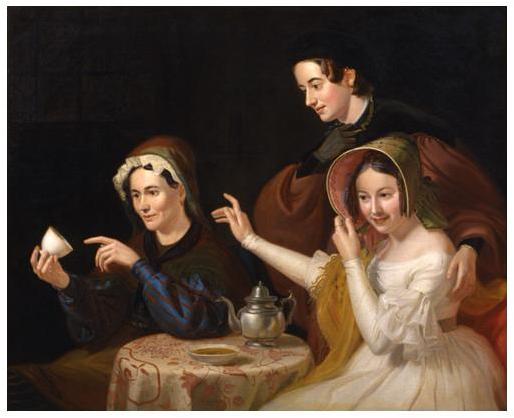
Taking control of the reading can be as simple as holding the cup and pointing out the images with a finger. Depending on how close you sit, your family member or friend will have to see what you see, or, just as likely, will take your word for it.
If you are reading for a paying client who does not does not want to look — and not all clients do look — this method resembles a telephone card reading. You are the authority. You can describe the images, but the meaning of it is what most concerns the sitter, and that is all left up to you.
"I see a squirrel on a branch. Here is his tail, all arched up ... and he is holding an acorn in his little hands. The squirrel tells you to save your money now for future times of want, and the acorn, at the top of the cup, means slow but steady growth in your finances."
Your verbal description and the use of a guiding finger makes the image clear, but the prophecy is what the reader came for, and what she wants to learn about
The Pencil or Chopstick as a Pointer
During the rise of the tea room movement it became common for restaurants and luncheons to offer a free or low-priced tea leaf reading with every meal. Having your fortune told at a tea room took tasseomancy to a new level of popularity, but it also introduced a level of professionality -- and therefore distance -- between reader and sitter.
When the reader sits across a table from the client in a restaurant, the lack of personal familiarity and the need to preserve state and city health regulations of sanitation and cleanliness impose formal limitations on the reader-client relationship. This photo tells us a great deal about how tea leaf reading evolved into a profession from the 1920s to the present.
This remarkable press photo is undated, but was taken circa 1940, judging by the clothings and hair styles. At the left we see a young woman with marcelled hair, wearing a jaunty black straw hat and a cashmere sweater, set off by dark red fingernail polish and a chunky wrist watch. She leans her head on her hand and looks at the cup which the reader is interpreting. She has just eaten lunch, as indicated by a salt shaker and another cup, which happens to be a piece of Syracuse Econo-Rim restaurant ware.
The reader, Nedra, holds a cup that does not match the customer's. It is broader and more rounded than the art deco restaurant ware, and it is probably green-striped white ware, an easy cup for a reader to use. With a regular yellow pencil, the kind that comes with an eraser on the end, she points out significant images in the cup. Were she reading at a Japanese or Chinese themed tea garden, she would probably use a chopstick to point out the omens.
Nedra's hair is formally permed, and she wears an extravagantly printed front-buttoned day dress with a leather belt. Surprisingly, her long necklace, just visible below her bosom and by her belt, is an antique tribal charm-box with five chains and hanging beads at the bottom. It looks Middle Eastern to me, and certainly does not match Nedra's overall Anglo-Irish-Scottish facial features. Thus, Nedra is declaring herself to be a "Gypsy," in the sense of "a psychic reader," not a Romani woman..
This makes sense, because, after all, she is reading at "The Gypsy Tea Kettle," a well-known chain of tea rooms in New York City at the time. Their locations included:
- 136 West 50th Street, NYC, NY
- 205 West 50th Street at Broadway, NYC, NY
- 503 Fifth Avenue at 42md Street, NYC, NY
- 431 Fifth Avenue at 38th Street, NYC, NY
Here are some other mementos from The Gypsy Tea Kettles, where Nedra and her fellow reader Professor Punditjee held forth.
The Gypsy Tea Kettle, New York City, matchbook offering free tea leaf readings with every meal. Free tea leaf readings were offered with meals. |
The Gypsy Tea Kettle, New York City, matchbook offering free tea leaf readings with every meal. Free tea leaf readings were offered with meals. |
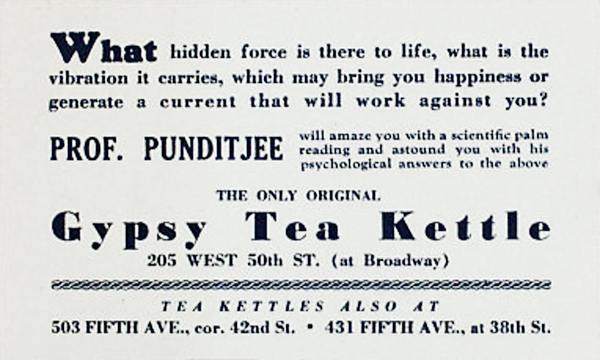
catherine yronwode
curator, historian, and docent
The Mystic Tea Room
